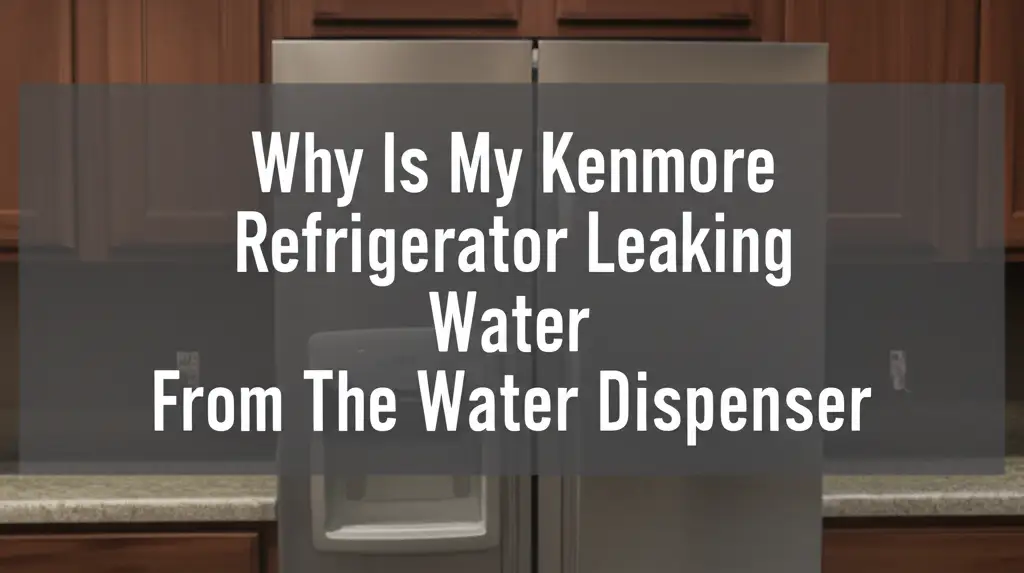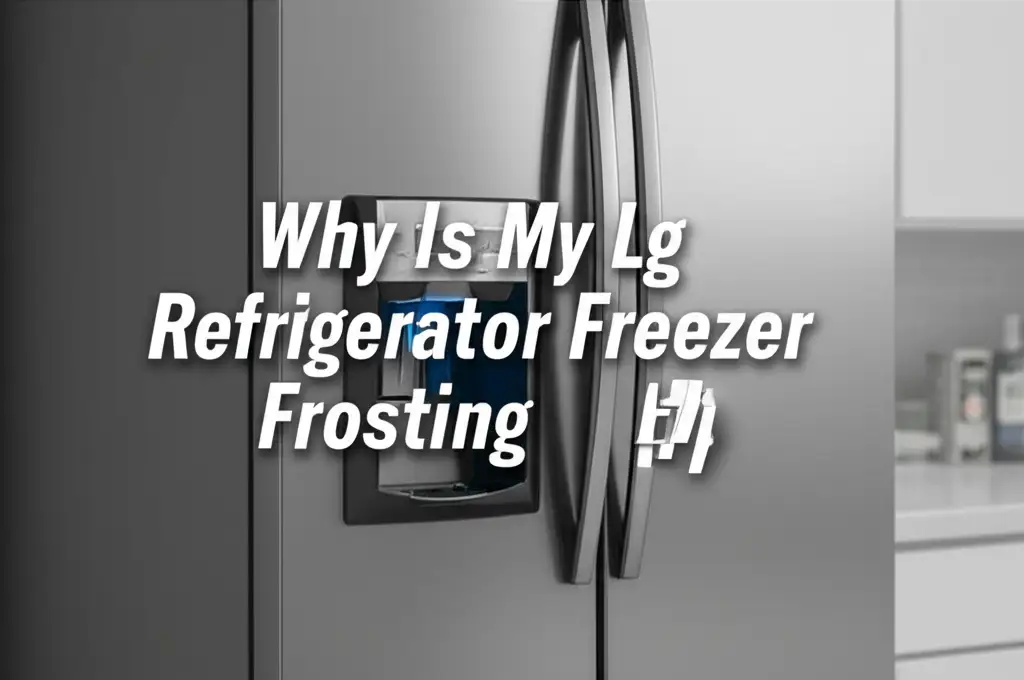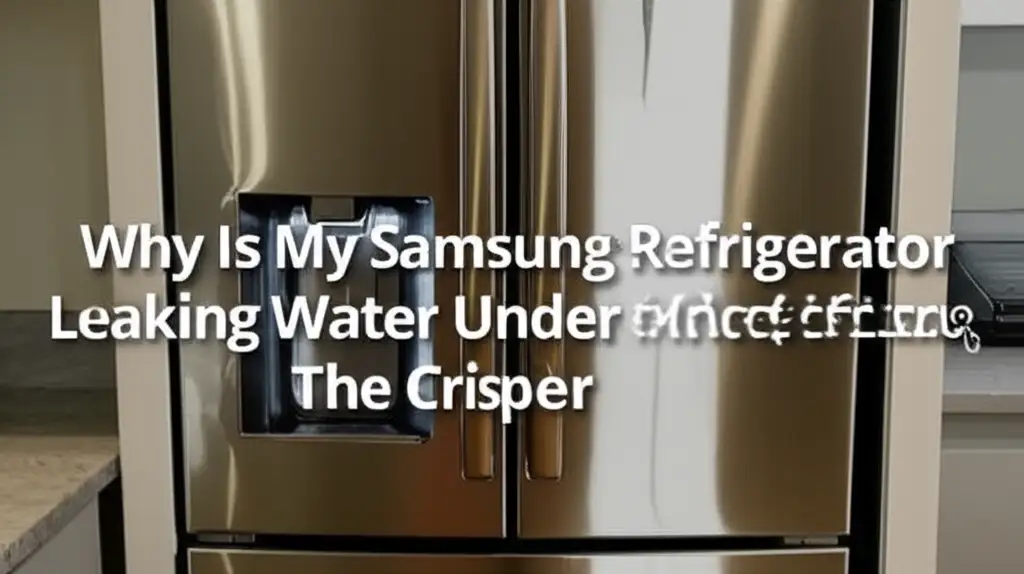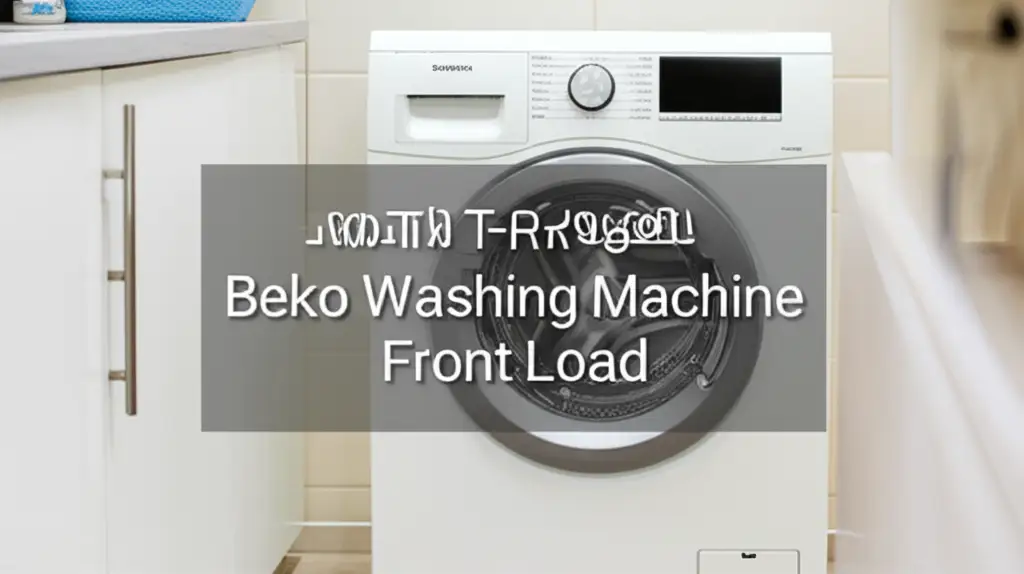· Katria Melrose · Home Appliances · 19 min read
Why Is My Kenmore Refrigerator Leaking Water From Underneath
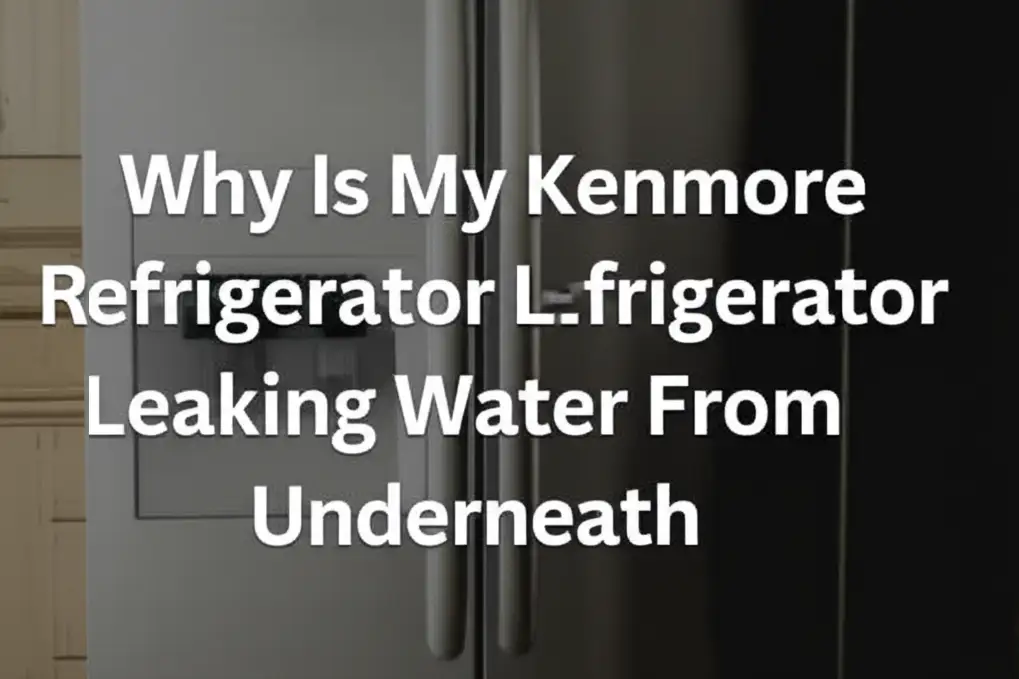
Troubleshooting Your Kenmore Refrigerator Leaking Water From Underneath
Finding a puddle under your refrigerator can be a frustrating experience. It is even more concerning when that puddle appears under your reliable Kenmore refrigerator. A leak underneath your fridge can damage your floor and create a slipping hazard. It also signals a potential issue with your appliance that needs quick attention.
I understand how disruptive this can be for your home. You want to stop the leak and prevent future problems. This article will guide you through the most common reasons your Kenmore refrigerator is leaking water from underneath. We will explore each possible cause in detail. You will learn simple steps to diagnose and often fix these issues yourself.
Takeaway
- Check the Defrost Drain Tube: A common culprit is a clogged or frozen defrost drain tube. Clear any blockages.
- Inspect the Drain Pan: Ensure the drain pan is not cracked, full, or dislodged. It collects defrost water.
- Verify Water Connections: Look for loose or damaged water supply lines, water filters, or the water inlet valve.
- Assess Freezer Health: Excessive ice buildup or a faulty ice maker can cause water to overflow and leak.
- Examine Door Seals: Worn or dirty door gaskets can lead to condensation and leaks on the floor.
A Kenmore refrigerator leaking water from underneath often points to a problem with its defrost system, water supply components, or internal drainage. These issues include a clogged defrost drain tube, a cracked or overflowing drain pan, a faulty water filter, a loose water supply line, or a malfunctioning water inlet valve.
Understanding Your Kenmore Refrigerator’s Drainage System
Your Kenmore refrigerator is a marvel of modern engineering, keeping your food fresh and drinks cold. It uses a sophisticated system to maintain its internal temperature. Part of this system involves regular defrost cycles. During these cycles, any accumulated frost or ice on the evaporator coils melts. This melted water needs a clear path to exit the refrigerator.
This melted water flows down into a specific channel. This channel directs the water into a small tube, known as the defrost drain tube. The tube then carries the water to a drain pan, also called an evaporation pan. This pan sits underneath your refrigerator, typically near the compressor. The heat from the compressor helps the water in the pan evaporate. This whole process ensures no water collects inside the fresh food or freezer compartments.
When any part of this drainage system fails, water has nowhere to go. It can back up or overflow, eventually finding its way out from underneath your Kenmore refrigerator. Understanding how this system works helps you pinpoint the source of the leak. It prepares you for effective troubleshooting. Many common leaks stem directly from a problem within this essential drainage pathway.
Clogged Defrost Drain Tube: A Common Culprit for Kenmore Leaks
One of the most frequent reasons a Kenmore refrigerator leaks water from underneath is a clogged defrost drain tube. This small tube, usually located behind the freezer back panel, is crucial. It carries the water that melts during the defrost cycle down to the drain pan. Over time, food particles, ice, or mold can build up inside this tube. This blockage prevents water from draining properly.
When the drain tube becomes clogged, the melting water has nowhere to go. It backs up into the freezer compartment. Eventually, it overflows and drips down through the refrigerator’s insulation. This water then appears as a puddle underneath your appliance. You might also notice ice buildup on the bottom of your freezer or water pooling inside the fridge.
Identifying a Clogged Drain
Spotting a clogged drain tube is fairly straightforward. Look for ice on the floor of your freezer, especially near the back wall. You might see water pooling inside the fresh food compartment too. These are strong indicators that the defrost drain tube is blocked. The water seeks the path of least resistance, and that often means down to the floor.
Steps to Clear the Defrost Drain
Clearing a clogged defrost drain tube is a common repair. First, unplug your Kenmore refrigerator for safety. Then, you will need to access the drain tube. This usually means emptying your freezer and removing the back panel covering the evaporator coils.
- Locate the Drain Opening: Find the small drain hole or opening underneath the evaporator coils. It is typically at the bottom center.
- Clear the Obstruction: Use a turkey baster or a syringe to flush warm water mixed with a little baking soda down the drain tube. You can also use a small, flexible brush or pipe cleaner to gently push through any blockage. Be careful not to damage the tube. Some people use a thin, flexible piece of wire.
- Access from Behind: If flushing from the inside does not work, you may need to pull the refrigerator away from the wall. Locate the drain tube where it exits into the drain pan. You can try to clear it from that end too.
- Check the Drain Pan: Ensure water is flowing freely into the drain pan after clearing the tube. This confirms your efforts were successful.
Addressing this issue quickly prevents further water damage. It also keeps your refrigerator running efficiently. For more specific issues with different brands leaking from underneath, you might find similar troubleshooting steps helpful, such as those for a Samsung refrigerator leaking water from underneath or an LG refrigerator leaking water from the bottom. The underlying principles of drainage are often similar across models.
Issues with the Defrost Drain Pan or Evaporation Pan
Another common reason your Kenmore refrigerator leaks water from underneath involves the defrost drain pan. This shallow pan sits at the very bottom of your refrigerator, usually under the compressor. Its purpose is to collect the melted water from the defrost cycle. The heat generated by the compressor then evaporates this water. This design avoids the need for a physical drain line to your home’s plumbing.
Problems arise when this pan becomes damaged or dislodged. A cracked drain pan cannot hold water effectively. The water will simply drip through the crack and onto your floor. If the pan becomes dislodged, water from the defrost drain tube might miss the pan entirely. It will instead fall directly onto the floor beneath the appliance. An old or dirty pan can also sometimes become overwhelmed, though this is less common than a crack or misplacement.
Inspecting and Securing the Drain Pan
Checking the drain pan is a crucial step in diagnosing a leak. You will need to carefully pull your Kenmore refrigerator away from the wall. The drain pan is typically located at the bottom rear of the unit. It may be a plastic tray that slides in or is secured with a few screws.
- Locate the Pan: Look for a wide, shallow plastic tray. It sits directly beneath the defrost drain tube’s exit point.
- Check for Cracks: Carefully remove the pan. Inspect it thoroughly for any visible cracks or holes. Even a small crack can lead to a significant leak over time. If you find cracks, you will need to replace the pan.
- Ensure Proper Seating: Make sure the pan is properly seated and level. The defrost drain tube should be correctly positioned over the pan, directing water directly into it. If it is misaligned, water will miss the pan.
- Clean the Pan: While you have the pan out, clean it. Sometimes, excessive debris can accumulate, affecting evaporation or indicating a past overflow.
- Test for Flow: If the pan appears intact, pour a small amount of water down the defrost drain tube. Observe if the water flows cleanly into the pan without overflowing or missing it. This test helps confirm the pan’s position and integrity.
Replacing a cracked drain pan is a relatively simple repair. You can usually order a new one from an appliance parts supplier. Ensuring the pan is correctly seated and intact is vital for stopping water from accumulating underneath your Kenmore refrigerator. This simple check can save you from bigger headaches.
Water Filter and Water Line Problems in Kenmore Refrigerators
Many Kenmore refrigerators come with an ice maker and a water dispenser. These features rely on a continuous supply of water. This water passes through a filter to ensure it is clean and tastes good. Problems with the water filter or the water supply lines are frequent causes of leaks. These leaks often appear from underneath the refrigerator, as water drips down.
A common issue is a loose or improperly installed water filter. When you change the filter, if it is not twisted in tightly or aligned correctly, water can seep out. This water then trickles down through the internal components and eventually pools on the floor below the appliance. Even a slight misalignment can cause a continuous drip. Over time, this drip becomes a noticeable puddle.
Damaged or loose water supply lines are another major concern. The water line brings water from your home’s main supply to the refrigerator. This line can be made of copper or braided stainless steel. If it gets kinked, punctured, or simply loosens over time, water will escape. The connections where the line attaches to the refrigerator or to your home’s water valve can also become loose. This is especially true if the refrigerator is moved frequently.
Checking Your Water Filter Connection
Checking your water filter is a good first step if you suspect a water supply-related leak. Most Kenmore refrigerators have the filter inside the fresh food compartment or behind a grille at the bottom front.
- Locate the Filter: Find your Kenmore refrigerator’s water filter. It usually has a twist-in or push-in design.
- Inspect for Tightness: Gently try to tighten the filter. If it is loose, a simple turn might stop the leak.
- Remove and Reinstall: If tightening does not work, remove the filter and reinsert it. Make sure it clicks firmly into place. This ensures a proper seal.
- Check for Cracks: While the filter is out, inspect the filter housing for any visible cracks. A damaged housing will require replacement.
- Consider Filter Age: An old filter can also sometimes fail, leading to leaks. Always use genuine Kenmore replacement filters or high-quality compatible ones. I have seen filter-related leaks on various brands. For example, issues with filters can cause a Samsung refrigerator to leak water from the filter or a Frigidaire refrigerator to leak water from the filter. The troubleshooting steps are very similar. If your refrigerator has a water dispenser, you might also want to check if the Kenmore refrigerator is leaking water from the water dispenser, as these issues can be related.
Inspecting Water Supply Lines and Inlet Valve
The external water supply line is often overlooked. This line runs from the wall valve to the back of your Kenmore refrigerator.
- Pull the Refrigerator Out: Carefully move your refrigerator away from the wall. Be gentle to avoid kinking or damaging the line further.
- Examine the Line: Inspect the entire length of the water line for any kinks, punctures, or signs of wear. Replace any damaged sections or the entire line if necessary.
- Check Connections: Feel around the connections at both ends of the line. Make sure they are tight and free from drips. You might see mineral deposits around a slow leak.
- Inspect the Water Inlet Valve: This valve, usually located at the back of the refrigerator where the water line connects, controls water flow. If the valve is cracked, loose, or its fittings are damaged, it will leak. You can learn how to replace the water valve assembly on a Kenmore refrigerator if you find this is the issue.
These checks are crucial because water leaks from these sources can be persistent. They also put your home at risk for significant water damage. Always unplug the refrigerator and turn off the water supply before performing any inspections or repairs involving water lines.
Malfunctioning Water Inlet Valve: A Source of Leaks Underneath
The water inlet valve is a vital component in Kenmore refrigerators that have an ice maker or water dispenser. This electrical solenoid valve controls the flow of water from your home’s supply line into the refrigerator. It opens when the ice maker needs to fill or when you press the water dispenser lever. If this valve malfunctions, it can be a significant source of water leaking from underneath your Kenmore refrigerator.
Several issues can cause the water inlet valve to leak. Over time, the plastic housing of the valve can crack due to age or stress. This crack allows water to seep out continuously. The compression fittings where the water supply lines connect to the valve can also become loose. This creates a slow drip that accumulates on the floor. Internal components, such as the solenoid or rubber seals, can also wear out. When these parts fail, the valve may not close completely, leading to a constant trickle of water.
A leaking water inlet valve often results in water pooling directly under the back of your refrigerator. This is where the valve is typically located. You might see a slow, steady drip, or even a small stream of water. Unlike a clogged defrost drain, a valve leak usually means water is flowing even when the ice maker or dispenser is not actively being used.
Diagnosing a Leaking Water Inlet Valve
Diagnosing a leaking water inlet valve requires careful observation. You will need to access the back of your Kenmore refrigerator.
- Turn Off Water and Power: Before doing anything, turn off the water supply to the refrigerator and unplug the appliance. This ensures your safety.
- Locate the Valve: The water inlet valve is typically a small, brass or plastic component located at the bottom rear of the refrigerator. The main water supply line from your wall connects directly to it.
- Inspect for Visible Leaks: Look for water drips, streaks, or mineral deposits on the valve itself or on the floor directly beneath it. These deposits are often a tell-tale sign of a slow leak.
- Check Connections: Feel all the connections on the valve. Ensure they are tight. Sometimes a simple tightening of a fitting can stop a small leak.
- Examine the Valve Body: Look closely at the plastic or metal body of the valve for any hairline cracks or damage. Even a tiny crack can cause water to escape.
If you identify a cracked valve body or persistent leaks from the fittings after tightening, the valve needs replacement. Replacing the water inlet valve on a Kenmore refrigerator is a common DIY repair. If you are unsure, calling a professional is always a good idea. However, many appliance parts suppliers sell replacement Kenmore water inlet valves. The repair typically involves disconnecting the old valve, attaching the new one, and reconnecting the water lines. As mentioned previously, you can find specific guidance on how to replace the water valve assembly on a Kenmore refrigerator if this seems like your issue. This type of leak is distinct from a side-by-side refrigerator leaking water in general, as it points specifically to the water supply mechanism.
Freezer Section Issues Leading to Underneath Leaks
Problems originating in the freezer compartment can also cause water to leak from underneath your Kenmore refrigerator. The freezer is a critical part of the cooling cycle. Any malfunction here can impact the entire system, including drainage. When certain conditions occur in the freezer, they can lead to excessive ice buildup or uncontrolled water flow, which then finds its way to the floor.
One common issue is an overflowing ice maker. Ice makers work by filling small trays with water, freezing it, and then dispensing the ice. If the water fill tube becomes clogged, or the water inlet valve supplies too much water, the ice maker tray can overflow. This excess water then drips down, often bypassing the regular drainage system, and eventually leaks out from under the refrigerator. This kind of leak typically happens when the ice maker attempts to fill.
Another significant issue is excessive frost buildup. While refrigerators have defrost cycles, sometimes the internal humidity or a faulty defrost system leads to an unusual amount of frost. This can happen if the freezer door is left open too long, the door seal is faulty, or the defrost heater or thermostat is not working correctly. When the defrost cycle eventually runs, there is too much ice to melt and drain efficiently. This can overwhelm the defrost drain tube or pan, causing water to spill over and leak underneath.
Ice Maker Leaks and Overflow
Diagnosing an ice maker leak involves observing its operation.
- Watch the Fill Cycle: Open your freezer door and observe the ice maker when it is supposed to fill with water. Look for any water spilling over the edges of the ice tray.
- Check the Fill Tube: The small tube that supplies water to the ice maker can sometimes become blocked or misaligned. Ensure it is clear and correctly positioned to fill the tray.
- Inspect the Ice Maker Unit: Look for cracks in the ice maker unit itself. A cracked tray or housing can leak water even before it freezes completely.
- Check the Water Pressure: Sometimes, if the water pressure is too high, the ice maker may overfill. You might need a pressure regulator on your home’s water line.
- Clear Blockages: If the fill tube is frozen or clogged, carefully thaw it and remove any obstructions. This is a crucial step.
Problems with ice makers are common across brands. For example, a GE refrigerator leaking water from the ice maker or a Whirlpool refrigerator leaking water from the ice dispenser involve similar diagnostic processes.
Excessive Frost Buildup
Excessive frost points to other underlying issues.
- Inspect Door Seals: A faulty freezer door seal allows warm, humid air to enter. This leads to condensation and ice buildup. Check the seals for tears or gaps. We will discuss door seals in more detail in the next section.
- Check Defrost Components: If the defrost heater or thermostat fails, the refrigerator will not defrost correctly. This leads to ice accumulation. These parts require professional diagnosis if you suspect they are faulty.
- Clear Air Vents: Ensure that air vents inside the freezer are not blocked by food items. Proper airflow is essential for even cooling and defrosting.
Addressing freezer-related leaks might require more in-depth troubleshooting. However, starting with the simple checks can often resolve the issue.
Condensation and Door Seal Problems on Kenmore Refrigerators
Your Kenmore refrigerator’s door seals, or gaskets, play a critical role in maintaining the internal temperature. These flexible seals create an airtight barrier when the doors are closed. They keep the cold air inside and prevent warm, humid air from entering. If these seals become worn, torn, or dirty, they lose their ability to create an effective seal. This allows warm air to seep into the refrigerator and freezer compartments.
When warm, moist air enters the cold environment of your refrigerator, it condenses. This condensation turns into water droplets. In the freezer, these droplets freeze, leading to excessive ice buildup. In the fresh food section, they collect as water. This excess water can overwhelm the normal drainage system. It can also drip down the front of the appliance or run underneath, creating puddles on your floor.
A faulty door seal can also cause your refrigerator to work harder. The compressor runs more often to maintain the set temperature, increasing energy consumption. Over time, this constant effort can reduce the lifespan of your appliance. Therefore, addressing seal issues quickly is important for both preventing leaks and maintaining efficiency.
Testing and Replacing Door Gaskets
Checking your Kenmore refrigerator’s door seals is a simple process. You can perform a quick test to see if they are sealing properly.
- The Paper Test: Close the refrigerator or freezer door on a dollar bill or a piece of paper. If the paper slides out easily, the seal is weak at that spot. Repeat this test all around the door.
- Visual Inspection: Look closely at the entire length of the door gasket. Check for any cracks, tears, hardening, or areas where the seal is flattened. Also, inspect for dirt, food debris, or mold, which can prevent a proper seal. Clean any grime with warm, soapy water.
- Feel for Cold Air: Place your hand around the edges of the door when it is closed. If you feel cold air escaping, it indicates a leak in the seal.
If you find that your Kenmore refrigerator’s door seals are faulty, they need replacement. Replacing door gaskets is a common repair that many homeowners can do themselves.
- Order New Gaskets: Make sure to order the correct replacement gaskets for your specific Kenmore refrigerator model.
- Remove Old Gaskets: The old gaskets are usually held in place by screws under the panel, or they might simply pull out from a groove.
- Install New Gaskets: Carefully press or screw the new gaskets into place. Ensure they are seated firmly and evenly all around the door.
- Allow Time to Set: After installation, it is helpful to close the doors and let the new seals conform for a few hours or overnight. Some people use a hairdryer on a low setting to gently warm and soften new gaskets, helping them conform better.
Replacing door seals is a cost-effective way to stop condensation-related leaks. It also improves your refrigerator’s energy efficiency. This preventative measure can save you from bigger problems down the line.
General Maintenance Tips to Prevent Kenmore Refrigerator Leaks
Preventing leaks in your Kenmore refrigerator is often simpler than fixing them. Regular maintenance can significantly extend the life of your appliance. It also ensures it runs efficiently and remains leak-free. I always recommend proactive care for any home appliance. A little effort now can save you a lot of headache and money later.
Here are some essential maintenance tips you should consider:
- Clean the Defrost Drain Tube Regularly: Make it a habit to flush the defrost drain tube a couple of times a year. Use a mixture of warm water and a small amount of baking soda. This helps prevent the buildup of mold, algae, and food particles that cause clogs. This simple step is one of the most effective ways to avoid leaks from underneath.
- Inspect the Drain Pan: While cleaning the drain tube, also take a moment to inspect the drain pan. Check for any cracks or signs of wear. Ensure it is positioned correctly underneath the drain tube’s outlet. A quick visual check can spot potential issues before they become major leaks.
- Check Water Filter and Lines: If your Kenmore refrigerator has a water dispenser and ice maker, regularly check the water filter and supply lines.
- Change Filter Promptly: Replace your water filter according to the manufacturer’s recommendations. An old filter can restrict water flow or even cause leaks if its housing degrades. You can find detailed guides on [how to change the water filter on a Kenmore bottom freezer refrigerator](https://homeessentialsguide.com/how-to-change
- Kenmore refrigerator leak
- refrigerator repair
- water leak under fridge
- Kenmore troubleshooting
- appliance repair


